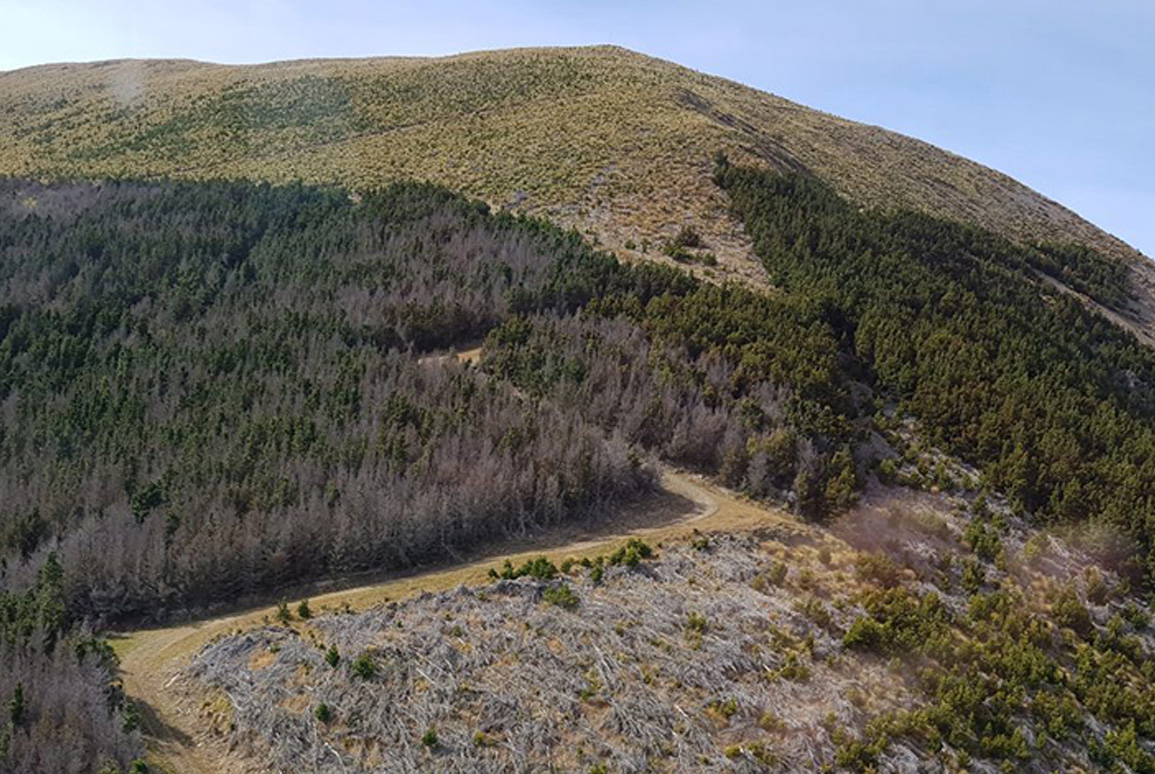Be Bold: Lessons learned from our work with Wilding Conifers
23 June 2020
Most people are familiar with the threat that mammalian predators like rats and stoats pose to New Zealand’s native birds, but the damage caused by invasive plant species isn’t as well-publicised.

We believe one of the greatest threats to New Zealand’s indigenous biodiversity is the incursion of wilding conifers in the high country of the South Island and in rural locations of the North Island.
However, public awareness of this problem is relatively low considering the effect these pest plants have on indigenous biodiversity and the wider economy; and that lack of knowledge has impacted the allocation of funding and resources.
The post-COVID economic stimulus package presents an opportunity for broad gains in the fight against these pest plants, provided those funds are allocated strategically to implement effective control programmes and also grow public knowledge of the threat posed by wilding conifers.
Here’s what we’ve learned over our six years on the front line of wilding conifer control:
Lesson #1) A Picture is Worth 1000 Words
You don’t need a degree in ecology to quickly understand the threat posed by invasive predators. Show anyone a photo of a stoat inside a bird’s nest with an egg in its mouth, and it’s clear that something bad is happening.
But to the untrained eye, a blanket of green pines covering the Mid Dome landscape doesn’t appear to be a problem. In fact, because we typically equate lush vegetation with a positive ecological outcome, the idea that bare golden-brown tussock is good, while swathes of tall green trees are actually an ecological disaster, is counterintuitive for many people.
It’s much easier to get people on board when the problem is easy to grasp. One of the biggest challenges around the issue of wilding pines is that a certain amount of explanation is required to appreciate the gravity of the situation.
Lesson #2) Beauty is in the Eye of the Beholder
Most of our native birds are conventionally beautiful – or ‘charismatic’, to use the ecological adjective. They’re easy to love. Rats and possums (in most peoples’ eyes) aren’t quite as adorable; so it’s simple to conclude: Bird = Good, Stoat = Bad.
In the high country, it’s not quite as straightforward. Many of the native plants that grow in Mid Dome have adapted to cope with climatic extremes. These species are small and cryptic (that’s the opposite of ‘charismatic’); they are easily missed, particularly if they are not flowering or fruiting. These little plants represent the true ecological beauty of the region; you just have to look closely to see them.
Lesson #3) It’s a Marathon, not a Sprint
Nothing feels better than a win. But with more than 1.5 million hectares affected by wilding pines, small wins are hard to find.
Clearing predators off an island like Tiritiri Matangi and turning it into a bird sanctuary wasn’t easy – it took ten years. But now it’s done, and for two decades the island has stood as an example of what success looks like.
Now compare a 220 hectare island to open land as far as the eye can see, with winds that can carry seeds for tens of kilometres. At our current pace, we’re a long way from the finish line.
Lesson #4) Out of Sight, Out of Mind
Mid Dome is deep in Southland, one of the most remote and least-populated areas of the South Island. The vast majority of New Zealanders are not directly impacted by wilding pines and many will never see those landscapes. So why should we care?
Because the damage done by these invasive conifers is truly monumental. It is estimated that without rapid action 20% of New Zealand will be invaded by wilding conifer forests within 20 years. Wilding conifers currently cover more than 1.5 million hectares of land and are spreading at an estimated rate of 5% a year.

So what should we do?
The post-COVID economic stimulus package presents an opportunity for both growing public understanding and making real gains in the fight against these pest plants, provided those funds are allocated strategically.
Spreading knowledge is the first step. New Zealanders as a whole, and particularly urban dwellers (a huge proportion of our voting public), need to understand and get behind this work so we can succeed. It’s up to us to explain why it’s critical that we get rid of these millions of conifers across New Zealand when we all agree that it’s bad to clear the Amazonian rainforest – and to clearly communicate the difference.
We also need to be bold in apportioning funding to make significant gains in eradication, by continuing to invest in existing programmes and see them through to completion. Pulling back isn’t an option as the pests always win.
We need new tools and technologies that will reduce costs and increase efficiency and efficacy. There are many on the way, but we need to expedite research and integrate these tools in our management.
Thanks to advances in technology – particularly in the way of drone photography, GIS technology and digital mapping – it’s easier to show the spread of wilding conifers than ever before. The same technology means we can monitor progress in management and control, and also more efficiently direct aerial spraying and ground control.
Further investment in technology will see exponential gains in efficacy, which means greater progress in eradication.
Digital imagery also gives us a way to illustrate the problem and make it easier for lay people – including stakeholders and politicians – to understand what’s happening.

